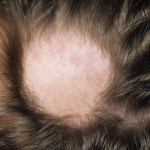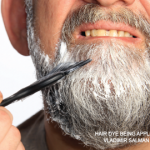To identify the genetic causes of AA, a related registry was started in 2000; 3,513 patients have completed the registry so far, she added. Eight genes have been identified as contributing to AA, including cytotoxic T lymphocyte–associated protein 4, interleukin (IL) 2, and human leukocyte antigen, which are also associated with RA. However, newer research points to ULBP3 as major culprit in AA, and higher levels of the gene were found expressed in hair follicles in AA. “People have always described alopecia areata as a cluster of bees swarming around the base of the hair follicle,” Dr. Hordinsky said. “Now, we believe that ULBP3 is the honey that attracts the lymphocytes, or the bees.” Emerging therapies for AA may target inflammatory cytokines like IL-15 or janus kinase, but more studies are needed.
When counseling patients presenting with hair loss, addressing hair-care habits is essential, Dr. Hordinsky concluded. Styling routines like using hair dryers on high heat settings, flat ironing or using curling irons, or even vigorous brushing and tight “ponytail” hairstyles can damage or pull out hair, she noted.
“The hair follicle is a highly complex structure,” Dr. Hordinsky stressed. “Many things can go wrong, so use the tools available.”
Susan Bernstein is a writer based in Atlanta.

